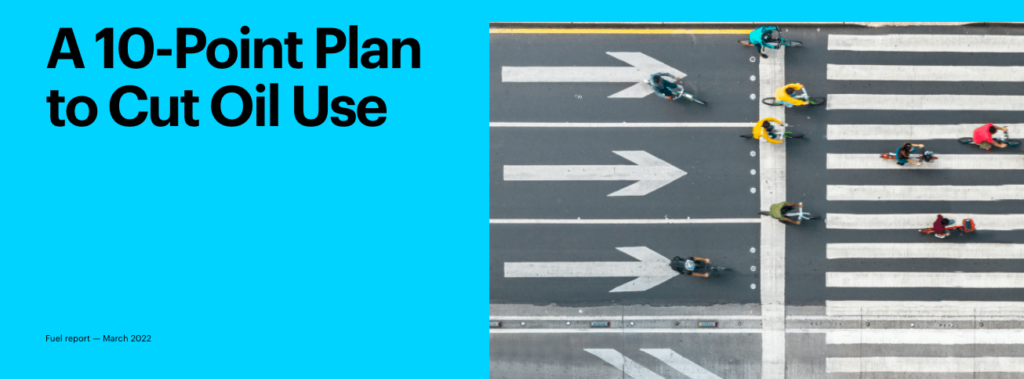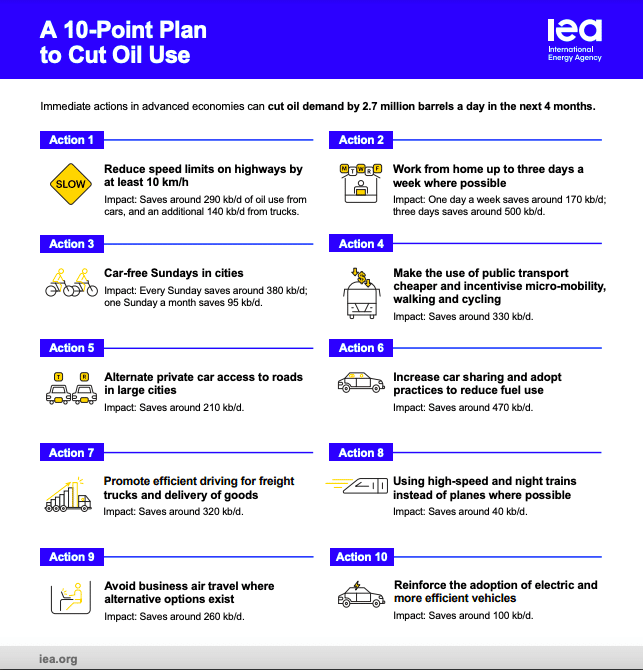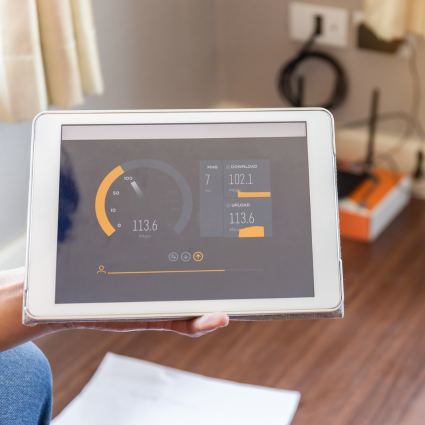When talking about the WFH benefits, we focus mainly on the impact we have personally witnessed in our day-to-day lives such as eliminating commute time, work-location flexibility, better work-life balance, etc. One aspect that is often overlooked is the impact on reducing carbon emissions from removing the majority of commuter cars from the roads.
A recent publication from the International Energy Agency (IEA) quantifies exactly that and gives recommendations on how to reduce carbon emissions by listing “A 10-Point Plan to Cut Oil Use.”

The focus of this article is around transportation initiatives that have varying degrees of impact on oil-use reduction. Among the recommendations is to reduce highway speed limits by 10 km/h (6 mph), car-free Sundays, cheaper and more available public transportation, more car sharing, etc. Here is the infographic by IEA that summarizes the 10 most impactful ways to reduce transportation emissions.

Source: https://www.iea.org/reports/a-10-point-plan-to-cut-oil-use
Some of them, such as the “Car-Free Sundays,” might sound alienating and idealistic (to me at least) at first. But I was surprised to read in the article that most of these measures have been tried in the past, especially during strenuous times such as the 1973 oil crisis.
Many, myself included, would probably think that working from home, to the extent we were forced to do during the pandemic, was infeasible or not practical. And we wouldn’t have been able to test that theory, aside from the pandemic.
Before the pandemic, commuters in advanced economies would burn 2.7 million barrels of oil per day. The average commute is 11 miles in the US and 9 in Europe; to make matters worse, a new US car consumes 40% more fuel than a European one.
If we take the lessons learned during the pandemic and we maintain the WFH policy for the 30% of jobs that can be done remotely, a WFH day saves 170 kb/d (kilo barrels per day), while three WFH days save 500 kb/d.
It’s notable that out of the 10 suggestions by IEA, working from home three days per week achieves the second highest reduction in oil consumption, only after reducing the speed limit by 10 km/h.
Source: IEA, Oil demand reductions in advanced economies within four months in the 10-Point Plan, IEA, Paris
The combination of these actions can reduce the daily oil demand by 2.7 million barrels a day. Some of them require policy changes and some behavioral changes. Reducing oil consumption during the pandemic can definitely be considered one of COVID’s silver linings.





